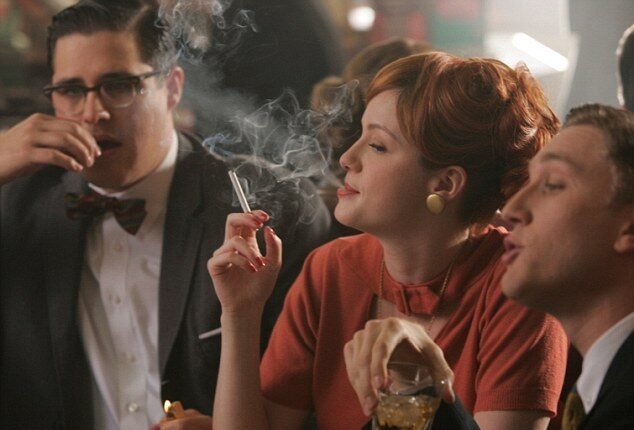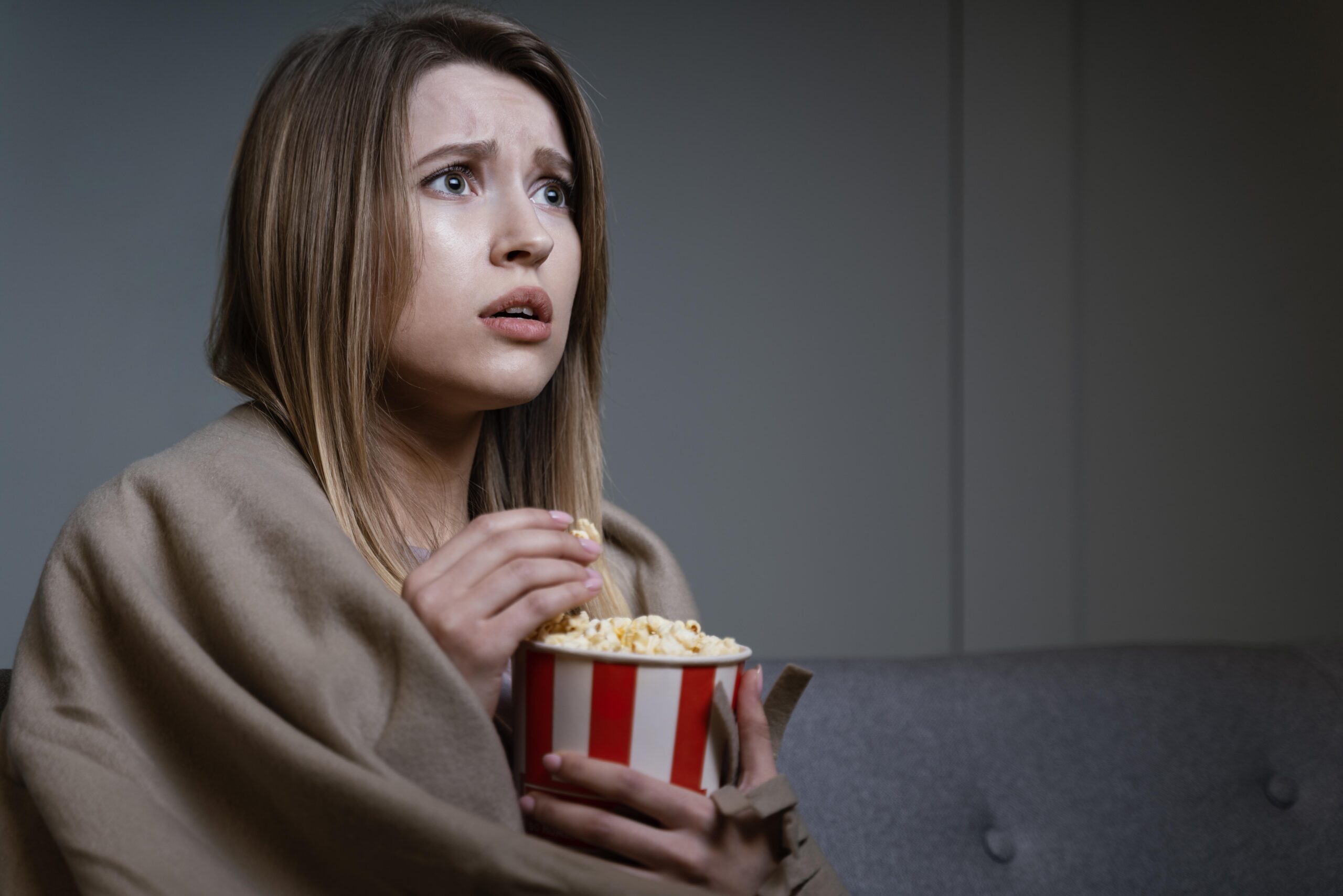Movies have long been a significant cultural force, reflecting and shaping societal norms, values, and behaviors. While cinema can educate, inspire, and entertain, it also has the potential to exert a darker influence. The content within films—ranging from violence and aggression to substance abuse and sexual content—can shape harmful behaviors, particularly among impressionable audiences. This Haelthy article explores how movies influence harmful behaviors, drawing on scientific research and studies to underscore the serious implications of cinematic exposure.
The Impact of Cinematic Violence on Aggressive Behavior
Violence in Movies: An Escalating Challenge
Violence in movies has been a topic of concern for decades. The depiction of aggressive behavior in films has escalated, leading researchers to question its impact on viewers, especially children and adolescents. According to a study published in Think India Quarterly, the portrayal of violence in movies has a significant effect on viewers, mainly young audiences, who are more susceptible to mimicking the aggressive behaviors they observe on screen.
The International Journal of Scientific Research and Management published a study examining how exposure to violent movies affects children’s behavior. The study found a direct correlation between watching aggressive content and increased aggressive behaviors in children. These behaviors include physical aggression, verbal hostility, and an overall desensitization to violence. Children, in their formative years, often struggle to distinguish between fiction and reality, making them particularly vulnerable to adopting behaviors observed in movies.
Psychological Theories on Media Violence
Psychological theories offer insight into why exposure to violence in movies might lead to aggressive behavior. Albert Bandura’s Social Learning Theory suggests that individuals, particularly children, learn behaviors by observing and imitating others. When movies portray violence without realistic consequences, viewers, especially younger ones, may learn to perceive aggression as an acceptable means of conflict resolution.
Furthermore, the cultivation theory posits that long-term exposure to media violence can lead viewers to develop a distorted perception of reality. For instance, those who frequently watch violent movies may begin to see the world as a more dangerous and hostile place, leading to increased fear, mistrust, and, potentially, preemptive aggressive behavior.
The Influence of Erotic Content on Sleep and Dreams

Erotic Movies and Their Psychological Impact
Erotic content in movies is another concern, particularly regarding its influence on young men. A study titled “Effect of an Erotic Movie on the Sleep and Dreams of Young Men” delves into the psychological impact of such content. The research, published in the Archives of General Psychiatry, reveals that exposure to erotic films can significantly affect sleep patterns and the nature of dreams in young men.
The study found that participants who watched erotic movies before bed experienced more disturbed sleep, characterized by increased wakefulness and fragmented sleep cycles. Additionally, the content of their dreams was notably influenced, with many reporting dreams that were more sexual or more emotionally charged. This disturbance in sleep and dream patterns can broadly affect mental wellness, as increased stress, anxiety, and even depression are closely linked to poor sleep quality.
The Long-Term Effects of Erotic Content
Beyond immediate sleep disturbances, long-term exposure to erotic content in movies can shape an individual’s attitudes toward sex and relationships. Continuous exposure to unrealistic portrayals of sex in movies can lead to distorted expectations and beliefs about sexual relationships, potentially fostering harmful behaviors such as objectification or unhealthy relationship dynamics. This is particularly concerning given that many adolescents turn to movies as a source of sexual education in the absence of comprehensive sex education.
Substance Use in Movies: The Gateway to Early Experimentation
Alcohol Content in Movies and Youth Drinking Habits

Movies often glamorize the use of alcohol, portraying it as a key component of social interaction, celebration, and even coping with stress. The Alcoholism: Clinical and Experimental Research journal published a study titled “Exposure to Alcohol Content in Movies and Initiation of Early Drinking Milestones,” which highlights the direct link between exposure to alcohol in movies and the initiation of drinking among adolescents.
The study found that young viewers who frequently watch movies with alcohol content are more likely to start drinking at an earlier age. This early initiation is concerning because it increases the risk of developing alcohol dependence later in life. The portrayal of drinking in movies often lacks the depiction of its negative consequences, leading to a skewed perception of alcohol consumption among young audiences.
The Allure of On-Screen and Normalization of Drug Use

Movies often depict drug use with an aura of excitement, freedom, and rebellion. They sometimes portray characters who indulge in drugs as living an enviable lifestyle full of adventure and thrill. This glamorization can make drug use seem appealing to young viewers, who may not yet fully grasp the consequences associated with such behavior. The idea that drugs are a part of a carefree, enjoyable existence can be particularly enticing for adolescents and young adults seeking to establish their identity or escape the pressures of daily life.
Recurrent exposure to drug use in movies can lead to the normalization of such behavior. When viewers repeatedly see characters using drugs without experiencing significant negative consequences, it can create a false perception that drug use is not only normal but also relatively harmless. This normalization is dangerous because it can lower the perceived risk associated with drug experimentation, leading to an increased likelihood of young people trying drugs themselves.
The Role of Media Literacy in Mitigating Harmful Behaviors

Given the significant impact that movies can have on behavior, it is crucial to promote media literacy among viewers, especially young people. Media literacy involves educating audiences to critically analyze and evaluate the content they consume, understand its intentions, and recognize its potential influence on their behavior and attitudes.
Programs that teach media literacy can help mitigate the harmful effects of exposure to violent, erotic, and substance-use content in movies. By fostering critical thinking skills, viewers can become more aware of how movies may shape their perceptions and behaviors, allowing them to make more informed choices about the content they engage with.
Conclusion
Movies have the power to shape societal norms and individual behaviors, sometimes in harmful ways. The depiction of violence, erotic content, and substance use in films can influence viewers, particularly younger audiences, leading to an increase in aggressive behavior, disturbed sleep patterns, and early initiation of risky behaviors like drinking. Understanding the dark influence of movies is essential for developing strategies to counteract these harmful effects, such as promoting media literacy and encouraging responsible content consumption.
As research continues to explore the complex relationship between media content and behavior, it becomes increasingly important for society to recognize and address the potential for movies to shape harmful behaviors. By doing so, we can harness the power of cinema for positive social influence while mitigating its darker impacts.
References
- Effect of an Erotic Movie on the Sleep and Dreams of Young Men. Archives of General Psychiatry. doi:10.1001/archpsyc.1969.01740150006002
- Movies on Our Minds: The Evolution of Cinematic Engagement. [Book reference].
- Effects of Aggressive Movies on Children’s Aggressive Behaviour. International Journal of Scientific Research and Management (IJSRM).
- Exposure to Alcohol Content in Movies and Initiation of Early Drinking Milestones. Alcoholism: Clinical and Experimental Research. DOI:10.1111/acer.13536.
- A study on the Impact of violence in the movies: an Escalating Challenge. Think India Quarterly. https://thinkindiaquarterly.org/index.php/think-india/article/view/9477
- Sex and Drugs in Popular Movies: An Analysis of the top 200 Films
https://doi.org/10.1177/014107680509801012




